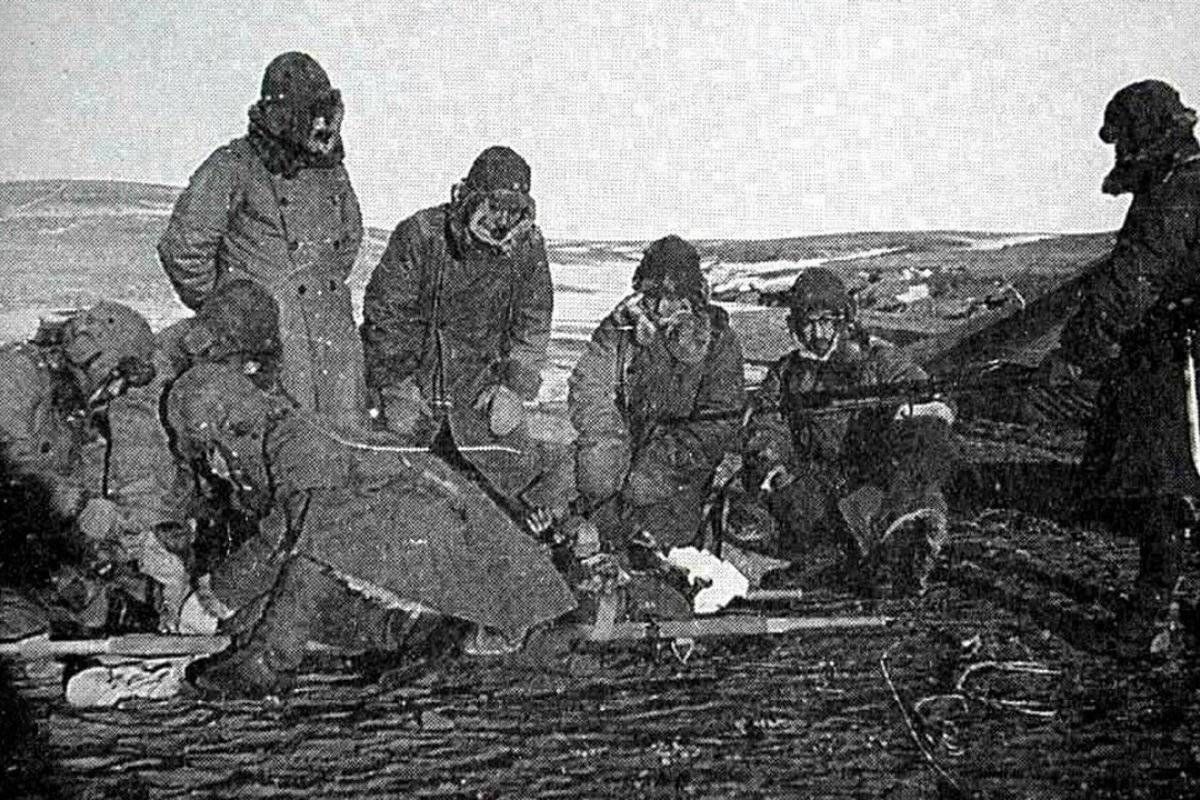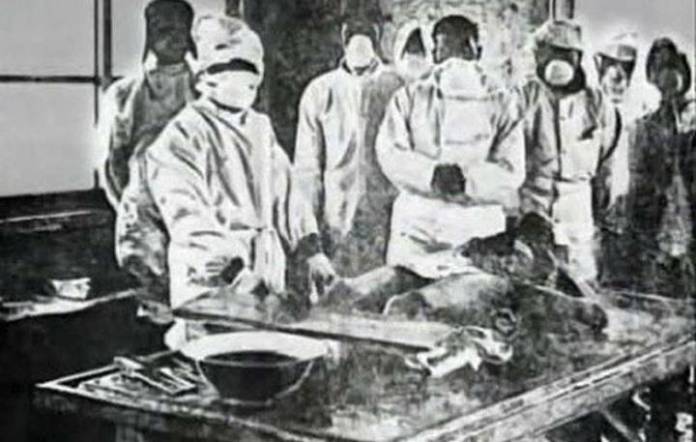MORE COVERAGE
Twitter Coverage
Satyaagrah
Written on
Satyaagrah
Written on
Satyaagrah
Written on
Satyaagrah
Written on
Satyaagrah
Written on
JOIN SATYAAGRAH SOCIAL MEDIA
Unit 731: The horrors of biological warfare experiments that the world forgot

The tales of World War II are replete with innumerable accounts of horror, atrocity and the absolute worst of human depravity. Among the kill count of tens of millions, there are stories that often go neglected. While Germany’s Holocaust against the Jews is well documented, there are stories of atrocity that have gone largely undiscussed. One of the lesser-known tales is that of Unit 731.
Unit 731 was the name of the Imperial Japanese Army’s covert biological and chemical warfare division. In the 1930s through the second China-Japan war and till the end of World War II, Unit 731 carried out horrific human experiments on the countless prisoners and villagers at Harbin, Northeastern China. The Unit was officially known as the Epidemic Prevention and Water Purification Department of the Kwantung Army.
As per reports, Japan’s biological warfare program was started in the 1930s, after biological warfare was banned in the Geneva Convention in 1925. The Kwantung Army, which had at that time controlled large swathes of China, made the headquarters near the Pingfang district in Harbin and evicted around 8 villages to make their facilities. One of the main reasons for selecting Harbin was that ‘test subjects’ were readily available. The Unit 731 was led by General Shiro Ishii, a combat medical officer of formidable reputation.
 |
“Wooden logs”
In the records of Unit 731, the test subjects were usually criminals, poor locals who signed consent forms for a small payment and Russian, Korean or Mongolian captives. One account, published in New York Times, narrates an experiment where a Russian mother and daughter were placed inside a thick glass chamber and had poisonous gas released inside. The mother sprawled herself over the child, as doctors outside gathered to record and study their convulsions, and time taken to die. Another account by a former Japanese medical worker named Takeo Wano narrates that a ‘western man’ was cut vertically in two pieces, and was ‘pickled in a six-foot glass jar of formaldehyde.
The test subjects were not named, there were just called Marutas, ‘wooden logs’ in Japanese.
Pathogen testing, studying ‘plagues’ on live human specimen
One of the most dangerous aspects of Unit 731 was the testing of biological warfare weapons, on live populations. Doctors under Shiro Ishii infected prisoners with live pathogens and studied how the diseases spread. To study infections, they sent infected persons among healthy prisoners. Some ‘logs’ got infected with multiple pathogens, to find out the cross-reactions of different diseases. Rats carrying the bubonic plague were let loose among cages of prisoners.
To study the spread of sexually transmitted diseases, Unit 731 doctors forced subjects to rape and impregnate female prisoners. Some women were forcefully impregnated to study disease progression during pregnancy and foetal transmission. Foetus, newborns were test subjects too.
 |
Vivisections
One of the most harrowing tales of the atrocities of Unit 731 was the accounts of vivisection, cutting open live prisoners, often without anaesthesia. In an NYT report, a former Unit 731 member, under the condition of anonymity, has described how they used to cut open prisoners while they screamed. The purpose of vivisection was to study the spread of pathogens into the internal organs of test subjects, while they were alive.
The intention was to develop ‘plague bombs’, using humans to spread diseases among Japan’s enemies. They experimented with plagues, anthrax and cholera.
 |
Field trials
Unit 731 also dropped ‘plague bombs’ over nearby Chinese villages and towns, to see how many and how effectively they can kill populations. They were trying to see whether they could start major outbreaks, and as reports suggest, they could. There is no accurate estimate as to how many people the Unit killed, some say around 3000, but Chinese accounts say the number may be far greater, as there were numerous outbreaks in villages due to the ‘field trials’. Poisonous gas was already in use by Japanese forces against Chinese soldiers and Unit 731 often tested the potency of gases among prisoners.
Test subjects were also taken to a ‘test grounds’ called Anda, where subjects were bombarded with weapons to study the efficacy. Even aeroplanes were used to spray pathogens over villages, to see how many can be killed. Plague outbreaks were reported in Ningbo and Changde at that time. It was later found out that the outbreaks were Unit 731 experiments, where they had released disease vectors into populations.
In 1942, Unit 731 infected water bodies in Zhejiang province with cholera and typhoid cultures, but they soon stopped because the outbreaks went out of control, killing over 1700 Japanese soldiers along with the intended Chinese targets.
The ultimate goal of the extensive field trials was to use the ‘plague bombs’ to start disease outbreaks in enemy countries, particularly the USA.
Not a rogue unit
Unit 731 was by no means a rogue unit containing some ‘mad scientists’ who carried out horrible human experiments. The works of the Unit was sanctioned by the Japanese government and it had wide authority, carrying our experiments in several locations and publishing detailed reports. Many Japanese scientists and researchers also argued that ultimately the Unit’s experiments were intended to find scientific cures and enable their forces against biological deterrents.
Though the then Japanese Emperor Hirohito had never openly acknowledged Unit 731, his brother, Prince Mikasa had once toured the headquarters at Harbin, China. As per the NYT report, he had written in his memoirs that he was shown films on how Chinese prisoners were made to march in plains of Manchuria for poison gas experiments.
Ultimate goal: Starting epidemics in the USA
There are accounts of Japanese generals experimenting with balloons loaded with bombs and sending them with a prevailing wind to land on coastal US states. Though the US government had not released reports during the WWII, there were reports of bomb balloons killing six people in Oregon.
The bomb balloons were reportedly precursors, of balloons that would have eventually carried plague bombs. Many Japanese generals were pushing for such an attack, but as per reports, it was a former PM named Hideki Tojo, who fiercely argued against a biological warfare against USA in mid-1944.
The NYT report states that when USA was preparing to attack the island of Saipan, Japanese army had sent a submarine loaded with biological weapons, but the submarine was sunk in the pacific.
As Japan was almost at the verge of losing, a desperate plan was made to attack California, code-named ‘Cherry Blossoms At Night. Suicide pilots were to carry plague bombs in Japanese submarines that were equipped to carry planes (I-400 class submarines of Japan could carry 3 Aichi M6A Seiran planes). However, the operation was never carried out. Reasons remain unclear.
The aftermath: USA silenced the atrocities of Unit 731, bought the data and let the scientists go
Despite the despicable crimes against humanity, the main scientific and operational brains behind Unit 731 were never punished or even faced a trial.
When USA dropped nuclear bombs on Hiroshima and Nagasaki, making it clear that the war was over, Unit 731 used dynamites to destroy its headquarters in China. However, the work, the research and the scientists of Unit 731 were found to be too valuable for the USA. Just like Operation Paperclip, where notorious Nazi war criminals were secretly smuggled to the USA and were given facilities to carry out their work, Unit 731 scientists bought their freedom in exchange for the scientific data on an extensive and effective biological warfare program.
Shiro Ishii lived a comfortable life in Tokyo till old age. His faithful associates raised in ranks and were placed in important positions. So many years later, while China remembers its countless victims with a museum at Harbin, Japan’s acknowledgement has been reluctant. In later decades of the 20th century, many former unit 731 workers had come out to narrate their experiences and the discussions were opened. Books have been written about the Unit and its works. Russian media outlet RT had made a documentary movie, called ‘Death Factory’, detailing Unit 731’s atrocities.
As per reports, in 1945, US general Douglas McArthur had received intelligence about the Unit’s work from secret documents. He reported granted Ishii and his associates immunity from prosecution, in exchange for their scientific documents.
Many members of Unit 731 were arrested by the Soviet Red Army and were tried at the Khabarovsk War Crime Trials.
In 2017, Japanese national broadcaster NHK had released a documentary detailing the atrocities of Unit 731. It had caused a huge uproar in Japan at that time.
However, the atrocities and the countless tales of suffering of the victims are lost forever. They are now fleeting shadows of forgotten complicity, rendered to the obscure pages of history among a million others.
 Support Us
Support Us
Satyagraha was born from the heart of our land, with an undying aim to unveil the true essence of Bharat. It seeks to illuminate the hidden tales of our valiant freedom fighters and the rich chronicles that haven't yet sung their complete melody in the mainstream.
While platforms like NDTV and 'The Wire' effortlessly garner funds under the banner of safeguarding democracy, we at Satyagraha walk a different path. Our strength and resonance come from you. In this journey to weave a stronger Bharat, every little contribution amplifies our voice. Let's come together, contribute as you can, and champion the true spirit of our nation.
 |  |  |
| ICICI Bank of Satyaagrah | Razorpay Bank of Satyaagrah | PayPal Bank of Satyaagrah - For International Payments |
If all above doesn't work, then try the LINK below:
Please share the article on other platforms
DISCLAIMER: The author is solely responsible for the views expressed in this article. The author carries the responsibility for citing and/or licensing of images utilized within the text. The website also frequently uses non-commercial images for representational purposes only in line with the article. We are not responsible for the authenticity of such images. If some images have a copyright issue, we request the person/entity to contact us at This email address is being protected from spambots. You need JavaScript enabled to view it. and we will take the necessary actions to resolve the issue.
Related Articles
- The Balliol college at the University of Oxford has dedicated a new building after Dr. Lakshman Sarup, the first candidate at Oxford to pass his thesis for a Doctorate of Philosophy (DPhil) degree on Sanskrit treatise on etymology
- "Greed's frontier: The harsh truth of expansionism": Amid the furore over China releasing a new map, Ex-Chief of Army Staff General Manoj Naravane shared a map of China and took a dig saying "finally someone has got the map of China as it really is"
- Haunting history- 50 years of Operation Searchlight in Dhaka
- Theft on a Grand Scale - Britain stole $45 Trillion from India and lied about it. Indian money developed Britain and Other Countries
- Taiwan govt has decided to open up its National archives to study and rediscover the legacy of Netaji Subash Chandra Bose: Deputy representative Mumin Chen said that Netaji has had a huge influence over Taiwan in the 1930s and 40s
- Former Prime Minister of Japan Abe Shinzo shot from behind by a miscreant while delivering a speech in the city of Nara, airlifted in critical condition, arrested suspect identified as Yamagami Tetsuya in his 40s, weapon was a sawed-off shotgun
- With Lord Mountbatten & Edwina's 'bed-hopping' marriage - gay brothels and affair with PM, British historian Andrew Lownie reveals it all
- Dandibhatla Viswanatha Sastry was invited by Germany's Führer Adolf Hitler to decode Vedas & build War Missiles before World War II
- Blacklist term may end this month for New Zealand YouTuber Karl Rock, had insinuated Govt of India’s personal vendetta against him in a recent video
- League of Islamic Council denounces new ‘haram’ laws in Thailand that are in the Parliament, labelling them in violation of Islamic law and unworkable for practising Muslim, these are Cannabis Bill, Progressive Liquor Bill, and Same-Sex marriage Bill
- "And Freya the walrus, you slept your last because we loved you too much": Freya killed by Norwegian authorities after becoming a victim of her own popularity, 1320-pound female walrus was put down as an assessment concluded threat to human safety"
- "Knowledge will give you power, but character respect": India to host next SCO Summit, PM Modi stated that we are focusing on people-centric development model, supporting innovation in every sector, China’s Xi Jinping pledges to support India summit 2023
- Victoria Nuland, US Under Secretary of State in New Delhi recently said democracies like India must stand against “autocracies like Russia and China”, leaked recordings of her suggested her role in 2014 Maidan 'revolution' and 'Regime Change' in Ukraine
- Ram Prasad Bismil, Tribute To The Fearless Freedom Fighter And Poet
- "Cash prize worth lakhs to peddle misinformation against India": Islamist group Jamat-e-Islami linked Indian American Muslim Council gives cash to ‘journalists’ from Wire, Newslaundry, Scroll Caravan etc, with a long history of lobbying against India

























